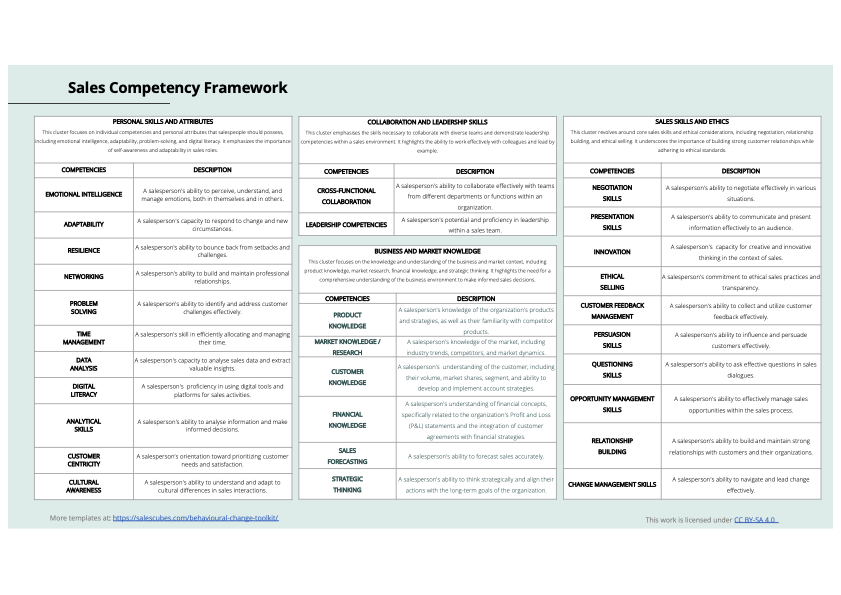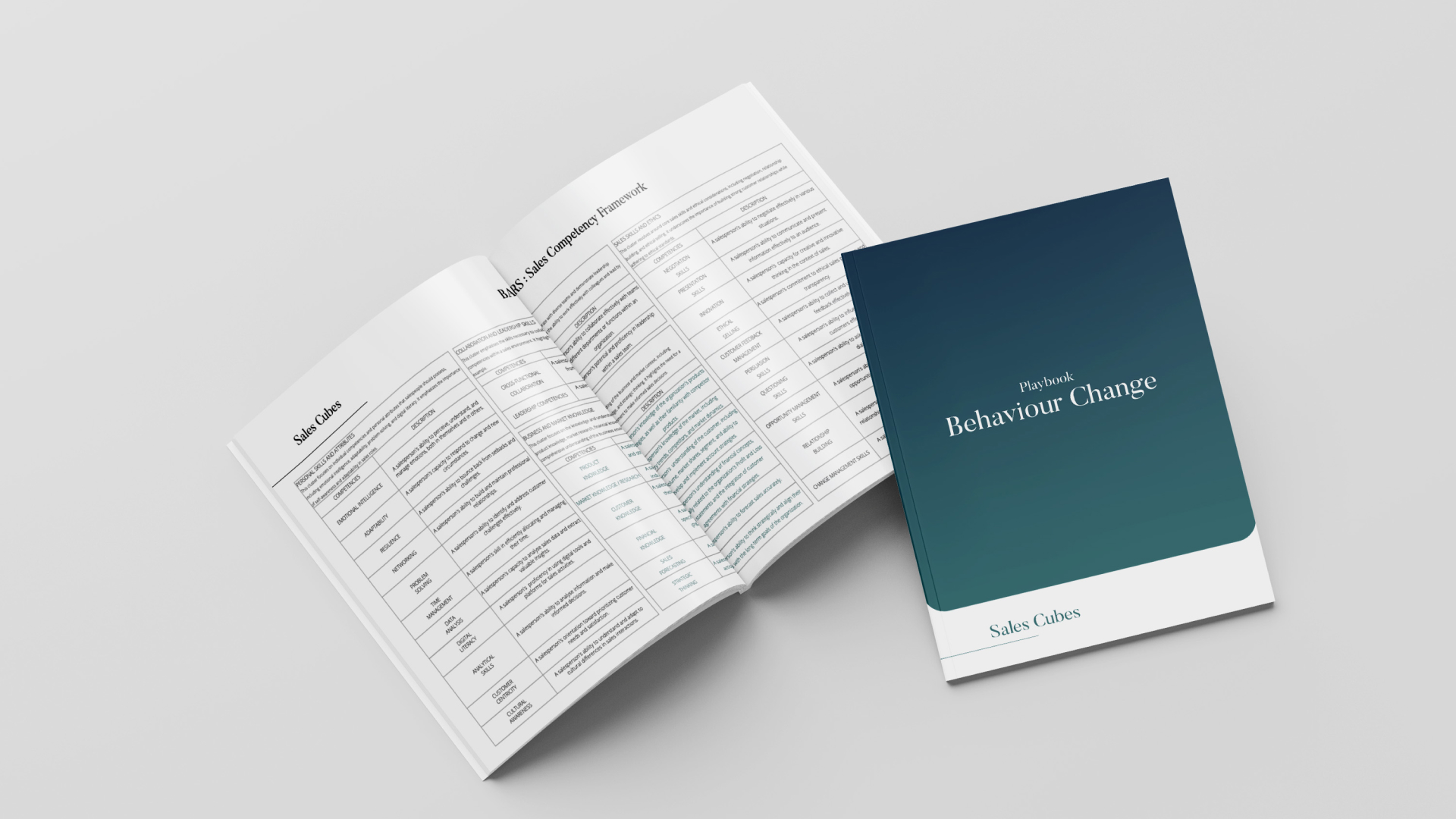What is it?
A behaviourlly-anchored rating scale (BARS) is a method used for evaluating competencies or performance. It involves rating employee behaviours on a scale, where each point on the scale is defined by specific behavioural examples that illustrate different levels of performance.
Useful For:
Using a behaviourally-anchored rating scale (BARS) for sales competency surveys is more effective than traditional 1-5 scales. Regular scales are subjective, often leading to debates about what a ‘3’ or ‘4’ really means. BARS uses specific behaviours, making evaluations more objective. It’s clear-cut: a person either shows the behaviours or doesn’t. This clarity also simplifies follow-up. By identifying target behaviours, it’s easier to outline steps for improvement. Unlike vague scales, BARS provides clear, actionable feedback, avoiding confusion about how to progress from one level to the next.
Application:
This tool is often used for annual competency evaluation surveys. It can be paired with a 360-degree review, where managers, colleagues, and even customers fill out the survey. This combination of perspectives offers a more comprehensive and objective understanding of an individual’s competencies.
Steps in the Process:
Step 1: Identify Relevant Competencies
Determine the competencies a salesperson needs based on the organization’s goals and strategy.
Example:
| Competency | Description |
| Online Engagement | Ability to use online platforms for marketing and branding. |
| Presentation Skills | Effectiveness in communicating and presenting to an audience. |
| Innovation | Capacity for creative thinking in sales. |
| Ethical Selling | Commitment to ethical sales practices |
Step 2: Describe the behaviours for each level
Define what behaviors represent each competency level.
Example:
| Competency | Level 1 | Level 2 | Level 3 | Level 4 |
| Presentation Skills | Struggles to communicate and present information effectively. | Delivers basic presentations but may not engage the audience consistently. | Delivers engaging and informative presentations, adapting to the audience’s needs. | Delivers compelling and persuasive presentations that captivate and motivate the audience. |
| Innovation | Rarely demonstrates creativity or innovative thinking in sales approaches. | Occasionally suggests innovative ideas to align products and services with customer need, but may not consistently apply them. | Consistently seeks and applies innovative solutions to sales challenges and opportunities and nd consistently demonstrates creative behavior and informed risk-taking. | Drives a culture of innovation, inspires customers and colleagues, and consistently introduces groundbreaking ideas that redefine sales strategies. |
| Ethical Selling | Occasionally deviates from ethical sales practices. | Generally adheres to ethical standards but may face ethical dilemmas. | Demonstrates consistent adherence to ethical sales practices and transparency. | Exemplifies ethical selling, serves as a role model, and maintains the highest ethical standards in all interactions. |
Step 3: Identify relevant survey participants
Select individuals who will evaluate each salesperson.
Example
| Name | Role |
| John Doe | Sales Person |
| Rick Mauer | Manager |
| Pat Robinson | Colleague |
Step 4: Create the report
After survey completion, prepare an individual report for each salesperson, including a radar diagram for a high-level overview and detailed competency evaluations.
Example:
Radar Diagram

Sales Competence: Presentation Skills
A salesperson’s ability to communicate and present information effectively to an audience.
| Level 1: Struggles to communicate and present information effectively. |
Level 2: Delivers basic presentations but may not engage the audience consistently. |
Level 3: Delivers engaging and informative presentations, adapting to the audience’s needs. |
Level 4: Delivers compelling and persuasive presentations that captivate and motivate the audience. |

In this example, each participant selected behaviour number 3.
Step 5: Conduct the Review Session
Together with their manager and/or with HR the salesperson can review the score and discuss which competencies he or she needs to develop further.
Utilizing the Behaviour Wheel of Change, the manager and salesperson can collaboratively identify key barriers hindering the adoption of the desired behaviour and select the most suitable intervention to cultivate the necessary competence.
Sources:
H. Kell, M. Martin-Raugh et all, 2017, Exploring Methods for Developing Behaviorally Anchored Rating Scales for Evaluating Structured Interview Performance, Wiley
J. Fetcher, 2023, Best Behaviorally Anchored Rating Scale Examples, HR Academy.com
H. Gandhi, 2023, Unleashing the Power of Behaviorally Anchored Rating Scale (BARS) in Indian Organizations: A Holistic Approach to Assessing Employee Performance, Linkedin.com
Tool



